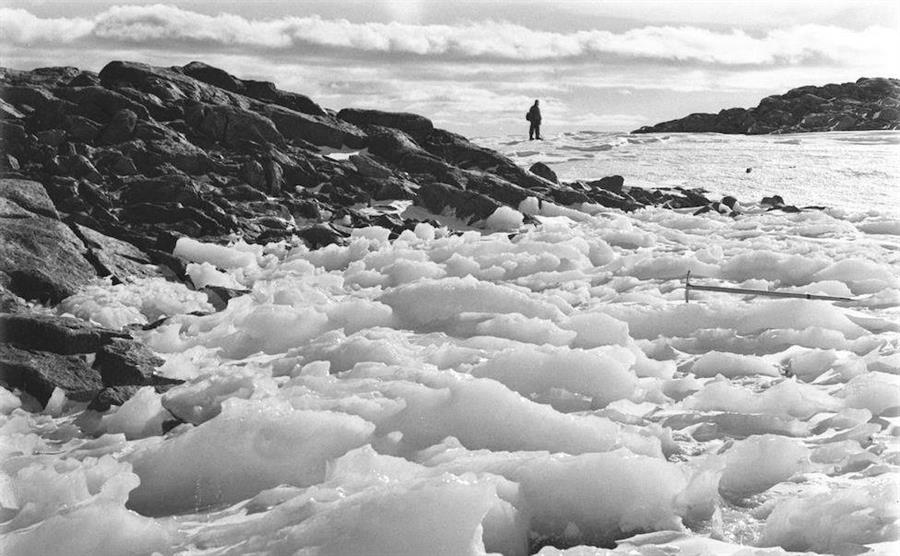The inaugural Frank Hurley Photography Awards hasn’t held back to join an impressive roster of established Australian-operated international photo contests.

The photography contest space is pretty crowded. In Australia alone, prestigious international contests include the Head On Awards, Fremantle International Portrait Prize, Epson Pano Awards, the International Landscape Photographer of the Year Award; and then there are countless local prizes and overseas awards.
So where does a brand new photo contest squeeze in?
Sam Edmonds, the Frank Hurley Photography Awards co-ordinator, recognised this as a challenge when speaking with Inside Imaging. However when the Mawson’s Hut Foundation, a not-for-profit organisation, approached him to organiser the awards, it was a special opportunity to celebrate both a legendary Australian photographer and explorer, as well as the great frozen Southern land mass.
‘The Mawson’s Hut Foundation run really fantastic outreach education programs about Antarctica throughout schools in Australia, as well as a museum in Hobart, and of course maintain the Mawson’s Huts in Antarctica,’ he said. ‘They wanted to interact with the creative and arts community, so I was brought onboard to help build these awards from the ground up.
‘I’ve spent the last seven years going to Antarctica every year. I’ve been over 30 times as a guide, photographer, and most recently an expedition leader. So it was really a no brainer. I fell in love with Antarctica over the years, and I see photography as a good way to spread education about the place. It’s remote, so people mostly understand the region through photography.
The Awards consist of five categories paying hommage to Hurley’s adventurous photographic legacy, with the grand prize winner receiving a 10-day Antarctic expedition including airfares to Ushuaia, Argentina. Read more here. As well as being one of Australia’s most famous photographers, Frank Hurley’s photos of Antarctica, captured on expeditions with Douglas Mawson and Sir Ernest Shackleton, are iconic historical images from the region.
‘We had quite a discussion about choosing Frank Hurley. His career is something often looked upon from various angles – he was a controversial figure in photography,’ Edmonds said. Anyone who has taken the time to look into his work will probably know he was perhaps famous, or perhaps notorious, for his composite images.
‘And that’s still an argument that’s playing out in photography now. He was even doing this on the front lines of war, and stated he’d be doing a disservice to the soldiers for not using composite images. He was quite convinced this was the only way to truly convey the horrors of what he was seeing, and perhaps felt the mechanical nature of photography wasn’t adequate in its ability to convey an experience. It’s an interesting sentiment, and something that’s still relevant.’
The Awards recruited an impressive jury panel, with some selections made based on photographer’s connection to Frank Hurley’s photographic career. Photographers include Australian photojournalists Stephen Dupont and Nick Moir, adventure photographers Krystle Wright and Paul Zizka, documentary photographer Katie Orlinsky, and Tasmanian Art Gallery director Janet Carding.
‘We have a mixed bag of Antarctic veterans, like Krystle (Wright), along with others such as Stephen Dupont, who’s known for his conflict photography. These are two photographers who represent different facets of Hurley’s life, but also the values we wish to build into the contest – really adventurous photography, that’s also thoughtful and diligent storytelling.
When it comes to select a winner, Edmonds suggests the judges will look for images that push the limits of photography, whether that’s technical or going to great lengths someone has gone to achieve a shot. It will be an image that connects with the adventurous spirit of Hurley. Funds generated by the Awards go directly to the Mawson’s Hut Foundation. Edmonds explains the Foundation views the huts as emblematic of Australia’s antarctic history and legacy, as Mawson was, in a way, ‘our answer to Shackleton and Scott – these big names of the heroic era’.
‘But there’s this other element, as Mawson was a scientist and geologist. Rather than seeking fame and glory, he was really looking to understand the Antarctic continent. And that’s where we now stand in a contemporary setting. While the Antarctic region was one of the last true wilderness to explore, we’re now concerned about the biological perspective of the area. Especially when considering about climate change.’
Entries start at $50 for two images, with discounts for more submissions and 50 percent off for all students. Entries close October 30. Click here for more info.





Be First to Comment